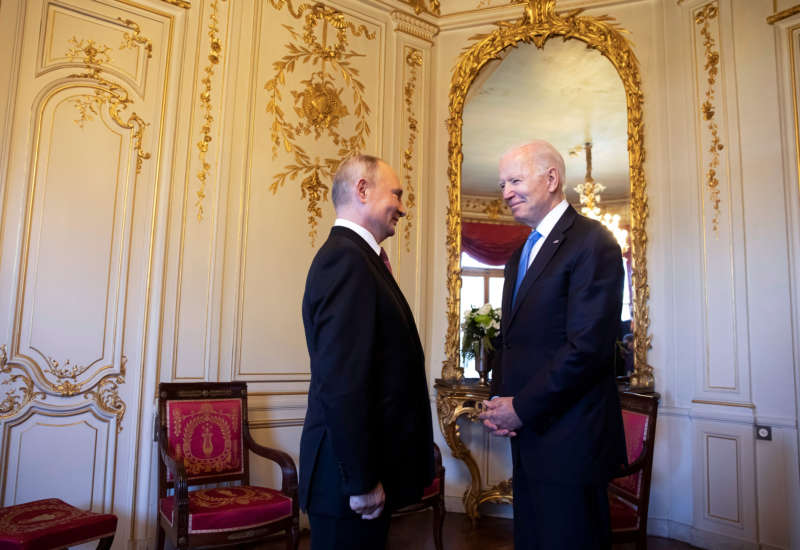U.S. President Joe Biden is reportedly weighing a Pentagon proposal to deploy thousands of American troops to the Baltics and Eastern Europe as progressive anti-war analysts and activists warn such a move would further inflame tensions in the region — and risk a full-blown war with Russia.
The New York Times reported Sunday that top U.S. Defense Department officials have “presented Mr. Biden with several options that would shift American military assets much closer to [Russian President Vladimir] Putin’s doorstep” after talks between U.S. Secretary of State Antony Blinken and Russian Foreign Minister Sergey Lavrov failed to produce a diplomatic breakthrough.
“The options include sending 1,000 to 5,000 troops to Eastern European countries, with the potential to increase that number tenfold if things deteriorate,” the Times noted. “Mr. Biden is expected to make a decision as early as this week.”
Reports of the plan came amid news that both the U.S. and United Kingdom are withdrawing diplomats’ families from Ukraine, citing potential “military action” against the country by Russia.
Russia has denied U.S. allegations that it is plotting an imminent invasion of Ukraine, a NATO ally that hopes to join the alliance — an ambition Russia sees as a major security threat. The U.S. has been pumping weapons into Ukraine for years, and in 2014 supported the violent overthrow of the country’s elected government. Currently, the U.S. has more than 150 “military advisers” in Ukraine, including Special Operations forces.
Ukraine Defense Minister Oleksii Reznikov announced via Twitter over the weekend that the nation had received a fresh batch of “more than 80 tons of weapons” from the U.S. and expects additional arms in the near future.
“This is not the end,” Reznikov wrote.
On Sunday, Russia dismissed an accusation — this time from the United Kingdom — that it intends to invade Ukraine and install a “puppet government” there.
“Stop spreading nonsense,” the Russian Foreign Ministry said in a statement, accusing NATO countries of “escalating tensions around Ukraine.”
The Times reported Sunday that the Biden administration is “now moving away from its do-not-provoke strategy” after previously “taking a restrained stance on Ukraine, out of fear of provoking Russia into invading.”
William Hartung, senior research fellow of the Quincy Institute, warned Monday that “even indirect intervention could cost billions, while increasing the risks of escalation in ways that could put U.S. personnel — and U.S. interests — in danger.”
“Perhaps the biggest risk is posed by the likely deployment of additional U.S. troops and contractors to help to train Ukrainian forces on using U.S.-origin systems, and to assist in maintaining them,” Hartung observed. “If any U.S. personnel end up on the front lines and are killed in the event of a Russian invasion, the stakes — and the prospects for escalation — will rise dramatically.”
Katrina vanden Heuvel, president of the American Committee for the U.S.-Russia Accord and publisher of The Nation, similarly argued that “if U.S. troops are there training Ukrainians, we may see American casualties.”
“That could lead to even more U.S. involvement and a potential and exceedingly dangerous quagmire,” she continued. “Ukraine demands a diplomatic and political resolution. A positive outcome would be the expansion of a new and demilitarized international security architecture in the region, and a moratorium on NATO expansion, along with international guarantees for Ukraine’s independence. May it be a bridge between East and West.”
“Any intervention now,” vanden Heuvel wrote, “would squander U.S. attention and resources on challenges posed by the pandemic, economic inequality, racial divisions, and catastrophic climate change.”


